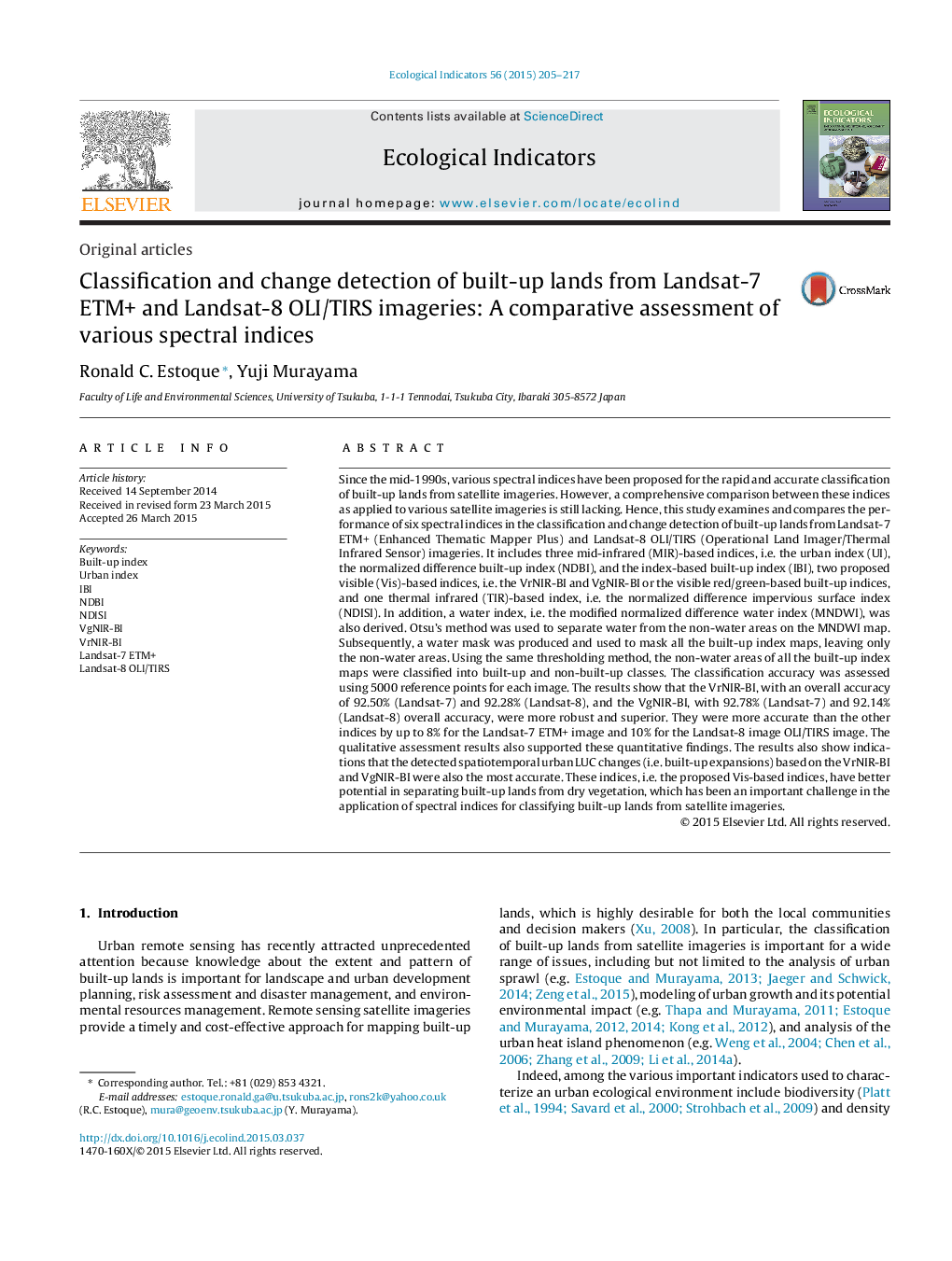| Article ID | Journal | Published Year | Pages | File Type |
|---|---|---|---|---|
| 6294362 | Ecological Indicators | 2015 | 13 Pages |
Abstract
Since the mid-1990s, various spectral indices have been proposed for the rapid and accurate classification of built-up lands from satellite imageries. However, a comprehensive comparison between these indices as applied to various satellite imageries is still lacking. Hence, this study examines and compares the performance of six spectral indices in the classification and change detection of built-up lands from Landsat-7 ETM+ (Enhanced Thematic Mapper Plus) and Landsat-8 OLI/TIRS (Operational Land Imager/Thermal Infrared Sensor) imageries. It includes three mid-infrared (MIR)-based indices, i.e. the urban index (UI), the normalized difference built-up index (NDBI), and the index-based built-up index (IBI), two proposed visible (Vis)-based indices, i.e. the VrNIR-BI and VgNIR-BI or the visible red/green-based built-up indices, and one thermal infrared (TIR)-based index, i.e. the normalized difference impervious surface index (NDISI). In addition, a water index, i.e. the modified normalized difference water index (MNDWI), was also derived. Otsu's method was used to separate water from the non-water areas on the MNDWI map. Subsequently, a water mask was produced and used to mask all the built-up index maps, leaving only the non-water areas. Using the same thresholding method, the non-water areas of all the built-up index maps were classified into built-up and non-built-up classes. The classification accuracy was assessed using 5000 reference points for each image. The results show that the VrNIR-BI, with an overall accuracy of 92.50% (Landsat-7) and 92.28% (Landsat-8), and the VgNIR-BI, with 92.78% (Landsat-7) and 92.14% (Landsat-8) overall accuracy, were more robust and superior. They were more accurate than the other indices by up to 8% for the Landsat-7 ETM+ image and 10% for the Landsat-8 image OLI/TIRS image. The qualitative assessment results also supported these quantitative findings. The results also show indications that the detected spatiotemporal urban LUC changes (i.e. built-up expansions) based on the VrNIR-BI and VgNIR-BI were also the most accurate. These indices, i.e. the proposed Vis-based indices, have better potential in separating built-up lands from dry vegetation, which has been an important challenge in the application of spectral indices for classifying built-up lands from satellite imageries.
Keywords
Related Topics
Life Sciences
Agricultural and Biological Sciences
Ecology, Evolution, Behavior and Systematics
Authors
Ronald C. Estoque, Yuji Murayama,
